
Keywords: gene drvie synthetic

|
Gene drive designs for efficient and localisable population suppression using Y-linked editorsR. Geci, K. Willis and A. Burt, PLOS Genetics, 18:e1010550. 2022.
Author summary Some pest populations can be successfully controlled by the inundative release of sterile males, but this approach is not practicable when the target population is large or the species difficult to rear. Computer modelling has previously demonstrated that releasing ... Keywords: engagement, gene drvie synthetic, genetic biocontrol, malaria, policy, regulation, risk |

|
Population replacement gene drive characteristics for malaria elimination in a range of seasonal transmission settings: a modelling studyS. Leung, N. Windbichler, E. A. Wenger, C. A. Bever and P. Selvaraj, Malaria Journal, 21:226. 2022.
BACKGROUND: Gene drives are a genetic engineering method where a suite of genes is inherited at higher than Mendelian rates and has been proposed as a promising new vector control strategy to reinvigorate the fight against malaria in sub-Saharan Africa. METHODS: Using an ... Keywords: engagement, gene drvie synthetic, genetic biocontrol, malaria, policy, regulation, risk |
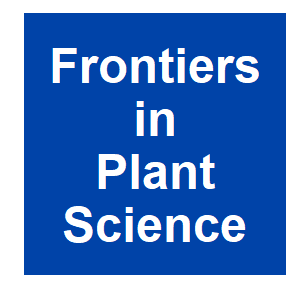
|
A New Approach to Develop Resistant Cultivars Against the Plant Pathogens: CRISPR DrivesM. I. Tek and K. Budak, Frontiers in Plant Science, 13. 2022.
CRISPR drive is a recent and robust tool that allows durable genetic manipulation of the pest population like human disease vectors such as malaria vector mosquitos. In recent years, it has been suggested that CRISPR drives can also be used to control plant diseases, pests, and ... Keywords: engagement, gene drvie synthetic, genetic biocontrol, malaria, policy, regulation, risk |
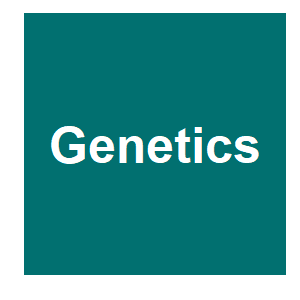
|
Cas9-mediated maternal-effect and derived resistance alleles in a gene-drive strain of the African malaria vector mosquito, Anopheles gambiaeR. Carballar-Lejarazú, T. Tushar, T. B. Pham and A. A. James, Genetics, 2022.
CRISPR/Cas9 technologies are important tools for the development of gene-drive systems to modify mosquito vector populations to control the transmission of pathogens that cause diseases such as malaria. However, one of the challenges for current Cas9-based drive systems is their ... Keywords: engagement, gene drvie synthetic, genetic biocontrol, malaria, policy, regulation, risk |

|
Historical perspective and new avenues to control the myiasis-causing fly Cochliomyia hominivorax in Uruguay.Fresia P, Pimentel S, Iriarte V, Marques L, Durán V, Saravia A, Novas R, Basika T, Ferenczi A, Castells D, Saporiti T, Cuore U, Losiewicz S, Fernández F, Ciappesoni G, Dalla-Rizza M and M. A., Agrociencia Uruguay, 25:e974. 2021.
Mosca de la bichera’ or simply ‘bichera’ are common names given in Uruguay and the region to the primary myiasis-causing species Cochliomyia hominivorax, the New World Screwworm (NWS) fly (Diptera: Calliphoridae). Myiasis happens when dipteran larvae infest live animals at ... Keywords: engagement, gene drvie synthetic, genetic biocontrol, malaria, policy, regulation, risk |

|
Towards CRISPR/Cas9-based gene drive in the diamondback moth Plutella xylostellaX. Xu, T. Harvey-Samuel, H. Siddiqui, J. Ang, M. A. E. Anderson, C. Reitmayer, E. Lovett, P. T. Leftwich, M. You and L. Alphey, bioRxiv, 2021.10.05.462963. 2021.
Promising to provide powerful genetic control tools, gene drives have been constructed in multiple dipterans, yeast and mice, for the purposes of population elimination or modification. However, it remains unclear whether these techniques can be applied to lepidopterans. Here, we ... Keywords: engagement, gene drvie synthetic, genetic biocontrol, malaria, policy, regulation, risk |

|
A homing suppression gene drive with multiplexed gRNAs maintains high drive conversion efficiency and avoids functional resistance allelesE. Yang, M. Metzloff, A. M. Langmüller, A. G. Clark, P. W. Messer and J. Champer, bioRxiv, 2021.05.27.446071. 2021.
Gene drives are engineered alleles that can bias inheritance in their favor, allowing them to spread throughout a population. They could potentially be used to modify or suppress pest populations, such as mosquitoes that spread diseases. CRISPR/Cas9 homing drives, which copy ... Keywords: engagement, gene drvie synthetic, genetic biocontrol, malaria, policy, regulation, risk |

|
Gene Drive: Modern Miracle or Environmental DisasterK. Brooks, Journal of Law, Technology and Policy, 2020.
This Note will show how gene drive technology fits imperfectly into the old regulatory framework through case studies. The Analysis will also describe how the different regulatory agencies handle similar gene drive-like organisms inconsistently, and the inherent danger of this ... Keywords: engagement, gene drvie synthetic, genetic biocontrol, malaria, policy, regulation, risk |

|
Teach Me in 10 – Gene Drive Research with Dr. Jennifer BaltzegarJ. Baltzegar, Technology Networks, 2020.
Dr Baltzegar teaches us about how the maturation of genetic engineering approaches has advanced gene drives, the two different strategies for gene drives and some of the key questions surrounding the application of gene drives in society. Keywords: engagement, gene drvie synthetic, genetic biocontrol, malaria, policy, regulation, risk |
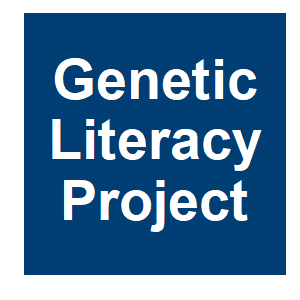
|
Exploring gene drive’s role in fight against malariaJ. Conrow, Genetic Literacy Project, 2020.
J. Conrow (2020) Genetic Literacy Project. An international initiative has formed to ensure that gene drive technology gets a chance to prove its mettle in the quest to control malaria. Keywords: engagement, gene drvie synthetic, genetic biocontrol, malaria, policy, regulation, risk |

|
2-Locus Cleave and Rescue; selfish elements harness a recombination rate-dependent generational clock for self limiting gene driveG. Oberhofer, T. Ivy and B. A. Hay, bioRxiv, 2020.
Self-limiting gene drive allows control over the spread and fate of linked traits. Cleave and Rescue (ClvR) elements create self-sustaining drive and comprise a DNA sequence-modifying enzyme (Cas9-gRNAs, Cleaver) that disrupts an essential gene, and a tightly linked, uncleavable ... Keywords: engagement, gene drvie synthetic, genetic biocontrol, malaria, policy, regulation, risk |
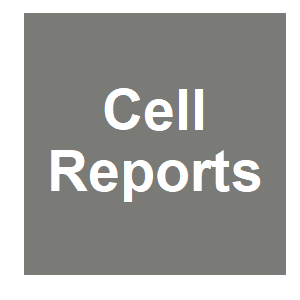
|
Small-Molecule Control of Super-Mendelian Inheritance in Gene DrivesV. López Del Amo, B. S. Leger, K. J. Cox, S. Gill, A. L. Bishop, G. D. Scanlon, J. A. Walker, V. M. Gantz and A. Choudhary, Cell Reports, 31:107841. 2020.
Summary Synthetic CRISPR-based gene-drive systems have tremendous potential in public health and agriculture, such as for fighting vector-borne diseases or suppressing crop pest populations. These elements can rapidly spread in a population by breaching the inheritance limit of ... Keywords: engagement, gene drvie synthetic, genetic biocontrol, malaria, policy, regulation, risk |
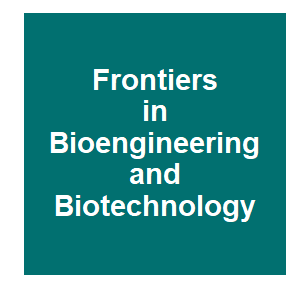
|
Genetic Biocontrol for Invasive SpeciesJ. L. Teem, L. Alphey, S. Descamps, M. P. Edgington, O. Edwards, N. Gemmell, T. Harvey-Samuel, R. L. Melnick, K. P. Oh, A. J. Piaggio, J. R. Saah, D. Schill, P. Thomas, T. Smith and A. Roberts, Frontiers in Bioengineering and Biotechnology, 8:452. 2020.
Invasive species are increasingly affecting agriculture, food, fisheries, and forestry resources throughout the world. As a result of global trade, invasive species are often introduced into new environments where they become established and cause harm to human health, ... Keywords: engagement, gene drvie synthetic, genetic biocontrol, malaria, policy, regulation, risk |

|
Hope rises as scientists eliminate malaria mosquitoesA. Adeyemi, New Telegraph, 2020.
A team of researchers led by Imperial College London have spread a genetic modification that distorted the sex ratio through a population of caged Anopheles gambiae mosquitoes using ‘gene drive’ technology. According to the results of their study published yesterday in ... Keywords: engagement, gene drvie synthetic, genetic biocontrol, malaria, policy, regulation, risk |

|
Malaria mosquitoes eliminated in lab by creating all-male offspringsAishwarya, Inshorts, 2020.
Imperial College London-led team used 'gene drive' technology to spread genetic modification that distorted sex ratio through caged breed of malaria mosquitoes. This caused mosquitoes to produce more male offspring, eventually leading to no female birth. The study suggested such ... Keywords: engagement, gene drvie synthetic, genetic biocontrol, malaria, policy, regulation, risk |
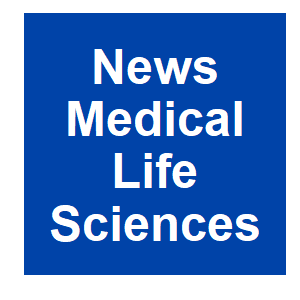
|
Researchers use “gene drive” technology to eliminate malaria mosquitoes in lab experimentsJ. Ives, News Medical Life Sciences, 2020.
A team led by Imperial College London spread a genetic modification that distorts the sex ratio through a population of caged Anopheles gambiae mosquitoes using 'gene drive' technology. Keywords: engagement, gene drvie synthetic, genetic biocontrol, malaria, policy, regulation, risk |

|
Researchers discover way to eliminate malaria carrying mosquitoesS. Digon, International Business Times, 2020.
Researchers from the Imperial College London have come up with a genetic modification that will pave the way for the elimination of malaria mosquitoes. Scientists say that the alteration distorts the sex ratio of caged Anopheles gambiae mosquitoes using what they call a ‘gene ... Keywords: engagement, gene drvie synthetic, genetic biocontrol, malaria, policy, regulation, risk |
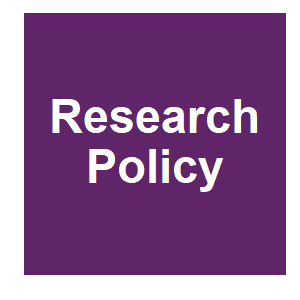
|
The development of complex and controversial innovations. Genetically modified mosquitoes for malaria eradicationV. Cisnetto and J. Barlow, Research Policy, 49:103917. 2020.
e use a longitudinal process approach and qualitative system dynamics modelling to study the development of genetically modified (GM) mosquitoes for malaria eradication in an African country. Keywords: engagement, gene drvie synthetic, genetic biocontrol, malaria, policy, regulation, risk |

|
Case Study 2: Oilseed Rape (Brassica napus L.)Johnannes L. Frieß, Broder Breckling, Kathrin Pascher and Windfried Schröder, Gene Drives at Tipping Points, 2020.
SPAGESelf-Propagating Artificial Genetic Elements (SPAGE) (Self-Propagating Artificial Genetic Element) technologies allow for a proliferation of genetic information on the populationPopulation level at a higher rate than usual Mendelian inheritanceMendelian inheritance. ... Keywords: engagement, gene drvie synthetic, genetic biocontrol, malaria, policy, regulation, risk |
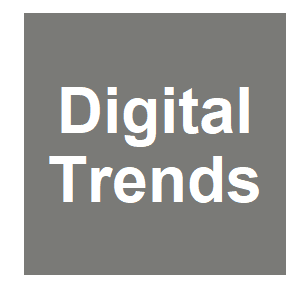
|
Gene editing could fight malaria by causing only male mosquitos to be bornL. Dormehl, Digital Trends, 2020.
What’s the theoretically easiest way to ensure that a population of mosquitos is not able to sustain itself through breeding? Make sure that there aren’t enough females, of course. That’s the exploratory approach being pioneered by researchers at the U.K.’s Imperial ... Keywords: engagement, gene drvie synthetic, genetic biocontrol, malaria, policy, regulation, risk |

|
An Initial Framework for the Environmental Risk Assessment of Synthetic Biology-Derived Organisms with a Focus on Gene Drives.W. G. Landis, E. A. Brown and S. Eikenbary, Synthetic Biology 2020: Frontiers in Risk Analysis and Governance. Risk, Systems and Decisions., 2019.
We apply the structure of source-stressor-habitat-effect-impact pathway derived from the relative risk model (Landis and Wiegers 2005) and as was demonstrated to be applicable in the National Academy of Sciences, Engineering and Medicine (NASEM) 2016 report Gene Drives on the ... Keywords: engagement, gene drvie synthetic, genetic biocontrol, malaria, policy, regulation, risk |

|
SummaryCommittee on Gene Drive Research in Non-Human Organisms: Recommendations for Responsible, Journal of Responsible Innovation, 5:S243-S254. 2018.
Scientists have studied gene drives for more than 50 years. The development of a powerful genome editing tool in 2012, CRISPR/Cas9,1 led to recent breakthroughs in gene drive research that built on that half century’s worth of knowledge, and stimulated new discussion of the ... Keywords: engagement, gene drvie synthetic, genetic biocontrol, malaria, policy, regulation, risk |

|
Anomaly handling and the politics of gene drivesS. W. Evans and M. J. Palmer, Journal of Responsible Innovation, 5:S223-S242. 2018.
Decisions about the development and use of gene drives are framing broader debates about the need for fundamental changes to biotechnology regulatory systems. We summarize this debate and describe how gene drives are being constructed as potential anomalies within the regulatory ... Keywords: engagement, gene drvie synthetic, genetic biocontrol, malaria, policy, regulation, risk |

|
Regulating animals with gene drive systems: lessons from the regulatory assessment of a genetically engineered mosquitoZ. Meghani and J. Kuzma, Journal of Responsible Innovation, 5:S203-S222. 2018.
In this paper, we consider the question of whether the United States Food and Drug Administration is prepared to effectively regulate insects and other animals with gene drives. Given the profound impact that gene drives could have on species and ecosystems, their use is a ... Keywords: engagement, gene drvie synthetic, genetic biocontrol, malaria, policy, regulation, risk |

|
Gene drive to reduce malaria transmission in sub-Saharan AfricaA. Burt, M. Coulibaly, A. Crisanti, A. Diabate and J. K. Kayondo, Journal of Responsible Innovation, 5:S66-S80. 2018.
Gene drive is a natural process by which some genes are inherited at a greater-than-Mendelian rate and can spread through a population even if they cause harm to the organisms carrying them. Many different synthetic gene drive systems have been proposed to suppress the number of ... Keywords: engagement, gene drvie synthetic, genetic biocontrol, malaria, policy, regulation, risk |

|
Harnessing gene driveJ. Min, A. L. Smidler, D. Najjar and K. M. Esvelt, Journal of Responsible Innovation, 5. 2018.
Determining whether, when, and how to develop gene drive interventions responsibly will be a defining challenge of our time. Here we describe capabilities, safeguards, applications, and opportunities relevant to gene drive technologies. Keywords: engagement, gene drvie synthetic, genetic biocontrol, malaria, policy, regulation, risk |

|
A roadmap for gene drives: using institutional analysis and development to frame research needs and governance in a systems contextJ. Kuzma, F. Gould, Z. Brown, J. Collins, J. Delborne, E. Frow, K. Esvelt, D. Guston, C. Leitschuh, K. Oye and S. Stauffer, Journal of Responsible Innovation, 5:S13-S39. 2018.
This paper reports on a workshop held in February 2016 to explore the complex intersection of political, economic, ethical, and ecological risk issues associated with gene drives. Workshop participants were encouraged to use systems thinking and mapping to describe the ... Keywords: engagement, gene drvie synthetic, genetic biocontrol, malaria, policy, regulation, risk |

|
Mapping research and governance needs for gene drivesJ. Delborne, J. Kuzma, F. Gould, E. Frow, C. Leitschuh and J. Sudweeks, Journal of Responsible Innovation, 5:S4-S12. 2018.
This special issue represents both deep and broad thinking about gene drives. The papers were first drafted nearly two years ago, and since then have been reviewed and revised to flesh out key arguments and take account of ongoing developments in the field. This field has moved ... Keywords: engagement, gene drvie synthetic, genetic biocontrol, malaria, policy, regulation, risk |

|
Gene drives and the expanding horizon of governanceE. Fisher, Journal of Responsible Innovation, 5:S1-S3. 2018.
Like other areas of emerging science and technology that trigger prolonged public debate over their transformative prospects, gene drives simultaneously generate prospects for new knowledge, hoped-for benefits, and formidable concerns. Their ability to bias inheritance of and in ... Keywords: engagement, gene drvie synthetic, genetic biocontrol, malaria, policy, regulation, risk |

Contact
David O’Brochta
Foundation for the
National Institutes of Health
geneconvenevi@fnih.org
RSS

